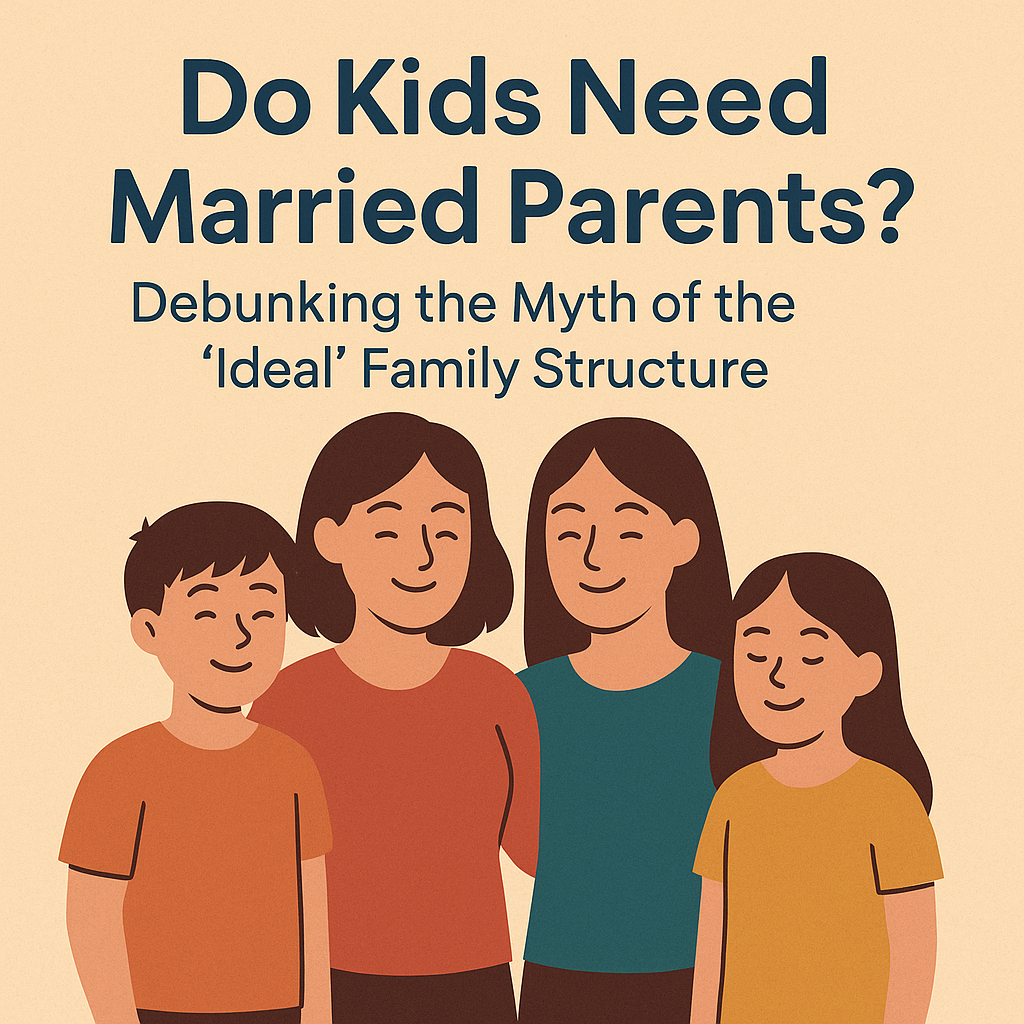
For generations, we’ve been told that the best shot a kid has in life is growing up with two married parents under one roof. It’s baked into our culture, reinforced by everything from political speeches to rom-coms. But is it actually true?
If you’re dating, thinking about your future, or already raising kids outside the traditional mold, you’ve probably felt this pressure. Let’s unpack the myth—and the reality—of the “ideal” family and see what actually matters when it comes to raising happy, healthy kids.
The “Traditional Family” Was Never the Universal Norm
That image of a married mom and dad raising 2.5 kids behind a white picket fence? That wasn’t always the standard—it just got marketed like it was.
Post-WWII America sold the nuclear family as the model to aspire to. Politicians loved it. Advertisers used it. Churches pushed it. But here’s the thing: It was more about social control and economic messaging than what’s actually best for kids.
The truth is, families have always taken different forms—across cultures and time periods. Extended families, single parents, same-sex couples, chosen families. “Traditional” is a moving target.
So, What Really Impacts a Kid’s Well-Being?
Here’s what the research consistently shows: what matters most for kids is not how a family is structured, but how it functions.
Key ingredients for healthy child development include:
- A safe, stable, loving home
- Adults who are emotionally available
- Consistent support and routines
- Access to basic resources: food, healthcare, education
Married parents don’t automatically deliver these things. And unmarried parents, co-parents, or solo caregivers are more than capable of creating them.
Studies from the American Psychological Association and others back this up: the quality of parenting and emotional environment has far more influence on outcomes than the parents’ marital status.
Kids Thrive in All Kinds of Families
Let’s talk about the families that society often sidelines:
- Single moms and dads doing the work of two people
- Cohabiting partners who are in committed, long-term relationships without rings
- Same-sex parents raising emotionally secure, socially aware kids
- Blended families navigating step-relationships with care
- Grandparents or other relatives stepping up as primary caregivers
You’ll find kids thriving in each of these households. Not because they defy the odds—but because the “odds” were based on a flawed assumption to begin with.
The Real Danger? Idolizing Marriage
It’s one thing to value marriage. It’s another to idolize it to the point of harming families who don’t—or shouldn’t—fit that mold.
Here’s what that kind of thinking does:
- Stigmatizes single or unmarried parents, especially mothers
- Pushes people to stay in unhealthy or even abusive relationships “for the kids”
- Skews public policy to favor married households, leaving others under-supported
Kids don’t benefit from marriage. They benefit from safety, stability, and connection. Sometimes that means two married parents. Sometimes it doesn’t.
What Kids Say Matters Most
When you ask kids what makes a family feel strong, here’s what comes up over and over:
- Feeling loved
- Spending time together
- Knowing they’re safe
- Having someone show up for them
Not one of these requires a wedding ring.
Reports from Child Trends and UNICEF highlight this reality. Kids don’t care about legal contracts. They care about being seen and supported.
Real Support for Real Families
If we’re serious about helping families thrive—whatever their shape—we need better systems, not just better ideals.
What works:
- Paid parental leave for all caregivers
- Affordable childcare and healthcare
- Legal protections for all parental arrangements
- Ending the “marriage bonus” in tax and welfare systems that penalize single or unmarried parents
Countries that provide this kind of support—regardless of family structure—see better outcomes for kids across the board.
The Bottom Line
No, kids don’t need married parents. They need present, stable, emotionally invested caregivers. Period.
As dating norms evolve and more people define family on their own terms, it’s time we stop measuring parents by their marital status and start measuring by their ability to show up.
So if you’re dating, co-parenting, or raising kids in a way that doesn’t look “traditional”—don’t sweat it. You’re not breaking the mold. You’re reshaping it.



